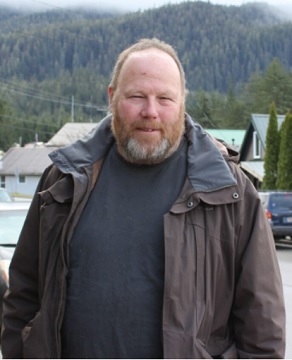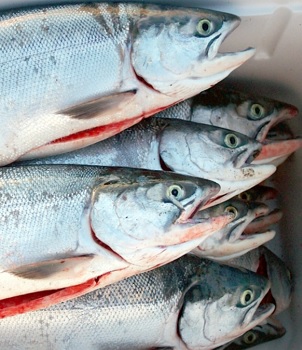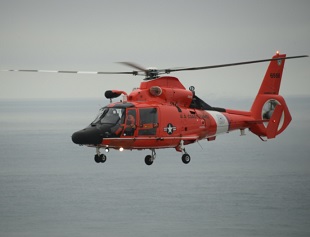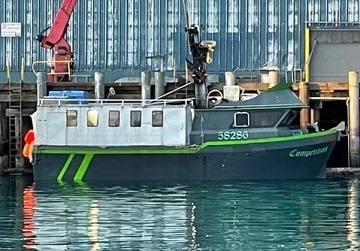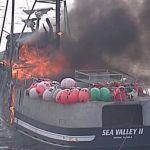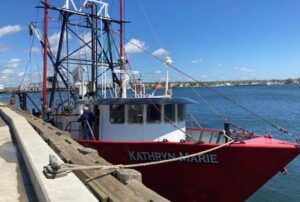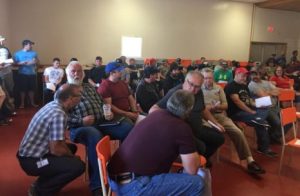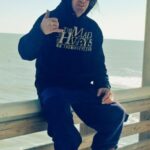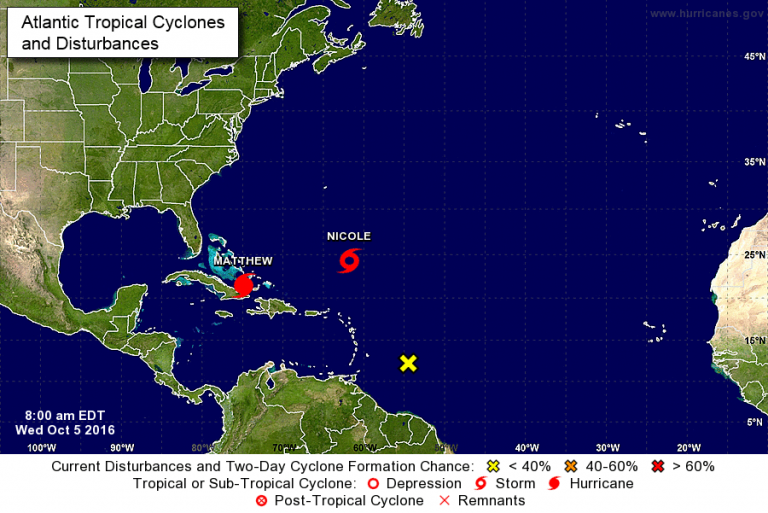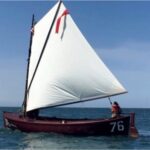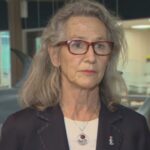Tag Archives: Alaska

All About the Fishing Fleet at Terminal 91
The factory trawlers, or fish processing vessels, of the North Pacific Fishing Fleet are back in Seattle after four months of harvesting pollock in the Bering Sea and Gulf of Alaska. The docks at Terminal 91 are buzzing with activity as crews unload their recent harvest and prepare to set sail again in late May. For more than 100 years, the North Pacific Fish Fleet, homeported at Terminal 91 and Fishermen’s Terminal, has fed the world and the economies of the Pacific Northwest and state of Alaska. Our region supplies 13% of the total U.S. commercial fisheries harvest by value. Commercial fishing activities at the Port of Seattle generated more than $671.2 million in business output in 2017 and supported 7,200 jobs. Learn more about the North Pacific Fishing Fleet, photos, >click to read< 10:16
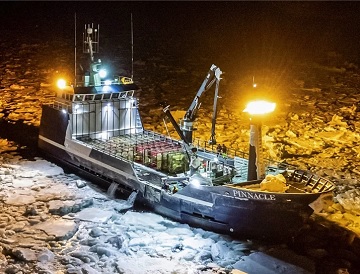
Into the ice: A crab boat’s quest for snow crab in a Bering Sea upended by climate change
Aboard the F/V Pinnacle in the Bering Sea. Through the wheelhouse window, Capt. Mark Casto spotted a white line on the horizon. The edge of an ice floe was illuminated by bow lights piercing the morning darkness of the Bering Sea. He throttled back the engines. Soon, the Seattle-based crab boat began to nose through closely packed pancake-like pieces and bigger craggy chunks, some the size of boulders, which bobbed about in the currents and clanged against the hull. Casto grabbed a microphone to relay a change in plans to the deck crew. Pull the pots up and stack them aboard. They would search for crab somewhere else. “Where the hell did that ice floe come from? … We’re retreating. It’s a hard word to say,” Casto declared. photos, video, charts and grafs, >click to read< 17:50
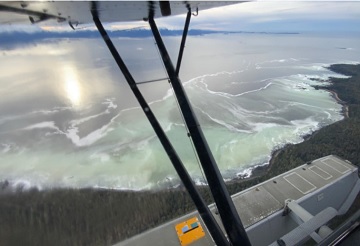
Sac roe herring fishery opens as first spawn is seen in Sitka Sound
The Sitka Sound sac roe herring fishery opened on Saturday, March 26. Seiners landed an estimated 450 tons of herring in 75 minutes of fishing, in beautiful weather along the eastern shoreline of Kruzof Island. The fishery moved into Hayward Strait on Sunday and was open for eight hours, from 11 a.m. until 7 p.m. As of press time, the total catch for the day has not been published. Matt Kinney is one of 47 permit holders in the fishery. “We have such a large GHL that we’ll never even come close to scratching the surface of actually processing what we’re allowed to catch,” Kinney said. >click to read< 13:57
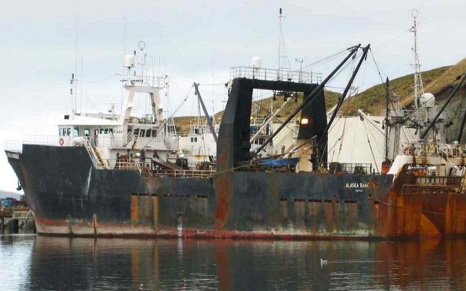
F/V Alaska Ranger—the historic Bering Sea rescue that defied the odds
On Easter morning in 2008 at approximately 3:00 a.m., the fishing vessel F/V Alaska Ranger’s mayday call raced across radio waves of the Bering Sea bound for the radio room of any Coast Guard rescue center within reach. Forty-seven fishermen aboard the Alaska Ranger were donning survival suits for what would become one of the largest and most dramatic rescue cases in modern Coast Guard history. At the time, the 378-foot high-endurance Coast Guard Cutter Munro was on patrol near the Bering Sea fishing fleet. For days before its mayday call, the fishing vessel had been forcing its way through destructive pack ice. Very early on March 23, without any warning, frigid water began rushing into the ship’s rudder room, flooding adjoining spaces and disabling the ship. The Alaska Ranger lost steering and power and was at the mercy of the unforgiving Bering Sea. photos, >click to read< 13:41
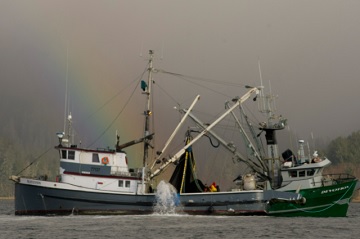
Fish Board mostly leaves Sitka herring alone following truce between users
After days of deliberation and a contentious set of proposals targeting the Southeast Alaska herring fisheries, the Alaska Board of Fisheries ultimately declined to make any major changes. To make attending the multi-week meeting easier for stakeholders, the board split the proposals into topics scheduled in three sessions, with herring first. There were 14 proposals dealing with herring from a variety of stakeholders, but the most contentious was were from the Sitka Tribe of Alaska and the Southeast Herring Conservation Alliance. The tribe’s proposals asked for a variety of changes to Sitka Sound herring management. The tribe’s main focus was to try to preserve more of the herring stock for subsistence use, but the commercial stakeholders say it would have come at the cost of the industry. >click to read< 15:15
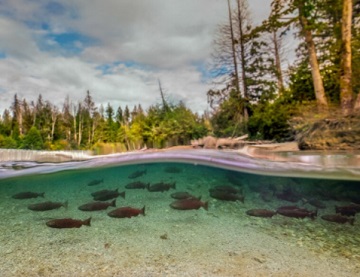
B.C. groups call on Alaska to halt interception of Canadian salmon
In a letter addressed to Alaska Gov. Mike Dunleavy, four salmon conservation groups presented data indicating that in 2021 more than 650,000 Canadian-origin sockeye salmon were caught in the waters of southeast Alaska. That is six times the 110,000 sockeye B.C. commercial fishers caught last year. “We’re just talking about the fish we know that are getting killed up there,” said Greg Taylor, a longtime consultant with commercial and First Nations fisheries. B.C. salmon populations have plummeted to record lows in recent years. In response, the federal government closed 60 per cent of B.C.’s commercial salmon harvest in June 2021 and announced a fishing licence buy-back program under its $647-million Pacific Salmon Strategy Initiative. The result for B.C., says Taylor: “It makes us a spawning ground for Alaska.” >click to read< 13:12
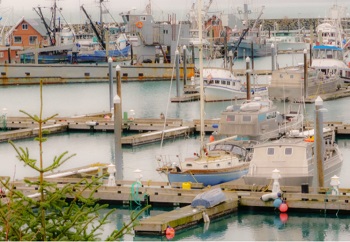
Long-Awaited Cordova South Harbor Project Is Finally Underway
“We’ve been needing it for a long time; the harbor that is being replaced was being built in 1981 when I first came here and was expected to have about a thirty-year lifespan,” says fisherman Jeff Bailey of the FV Odyssey and FV Miss Margeaux. “Now, it’s on year forty.” Bailey adds, “Every year, more floats become waterlogged and roll over, and the cleats on the dock have broken loose with a number of larger vessels… It’s not uncommon for floats to break loose with boats attached, and we have to go corral them.” Though the state originally built Cordova’s South Harbor, it later turned it over to the community, which became responsible for maintenance and repairs. “As fishermen, we invest in our equipment every year, building new boats and new fishing nets and making modifications and improvements, but the harbor didn’t evolve in this same way,” >click to read< 11:55
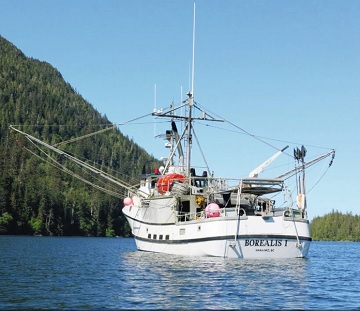
British Columbia: Hooked on halibut: For many commercial fishers, it’s a family affair
The commercial halibut season is underway along the coast of British Columbia and boats are already starting to deliver the flat fish to dinner plates. From now until early December, the B.C. halibut fleet will haul in an estimated 5.7 million pounds of halibut. The Americans will take the lion’s share of this year’s 41-million-pound total allowable catch, nearly 80%, because their territory stretches over California, Oregon, Washington and all of Alaska to the tip of the Aleutian Islands and covers nine of the 10 designated halibut-fishing areas along the Pacific Coast. Tiare Boyes and Cheri Hansen weigh in on what it’s like to work on the water during the halibut fishing season. Photos, >click to read< 11:14
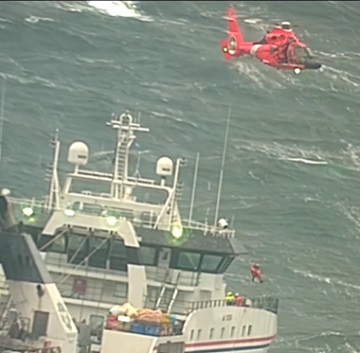
Video: Coast Guard medevacs injured man from F/V America’s Finest near Dutch Harbor, Alaska
The Coast Guard medevaced a man from a fish processing vessel approximately 92 miles northwest of Dutch Harbor Thursday. A Coast Guard MH-65 Dolphin helicopter crew deployed aboard Coast Guard Cutter Alex Haley hoisted the injured man from 262-foot fish processor America’s Finest at 12:52 p.m. The patient was flown to Dutch Harbor and placed in the care of LifeMed personnel. Watchstanders in the 17th Coast Guard District command center in Juneau received the initial medevac request from America’s Finest at 2:30 a.m. Thursday. Video, >click to read< 12:57
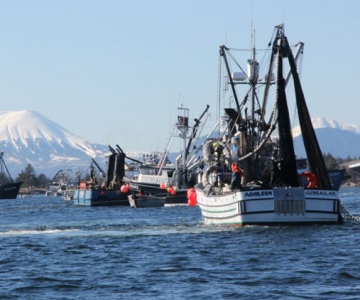
Changes to Sitka commercial herring fishery don’t get board support
Several proposals to make changes to the commercial sac roe herring fishery in Sitka Sound failed to win support from Alaska’s Board of Fisheries over the weekend. Two of those would have made a permanent move away from a competitive fishery. Another would have allowed permit holders to opt for an alternative way to harvest herring eggs for market. Two proposals sought to end the competitive purse seine fishery in Sitka Sound for sac roe and replace it with an equal share fishery. >click to read< 10:51
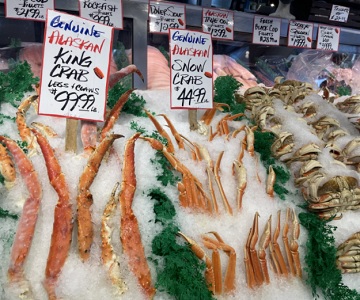
Trade war, Covid and now Ukraine invasion eat into Alaska seafood sales
First a trade war, then a battle against an infectious virus and now a real war are all affecting Alaska seafood exports. Shipments to China fell from as high as 30% of Alaska’s total seafood export value in the 2010s to 20% in 2020. “The U.S.-China trade war has displaced $500 million of Alaska seafood,” And though people bought more seafood to prepare at home during the COVID-19 pandemic, sales to restaurants and food services fell by 70%, Woodrow said. The food service market “still hasn’t fully recovered.” The Alaska product at risk in Russia’s invasion of Ukraine is pink salmon roe. Eastern Europe is a major buyer of the product, he said. “It’s a regional preference.” Alaska in 2021 shipped to Ukraine about $20 million of pink salmon roe,,, >click to read< 11:37
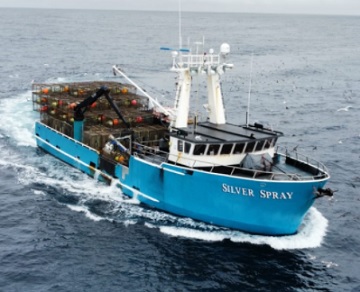
Crab crash: Effects of collapsed Bering Sea crab stocks are being felt far beyond the fleet
The crash in Bering Sea crab stocks is translating to serious impacts for fishermen and communities across the Western Alaska coast. From the top, the Bristol Bay red king crab fishery is closed entirely this season for the first time since the 1990s, while the Bering Sea snow crab total allowable catch was reduced by nearly 90 percent. In the meantime, fishermen who depend on crab are dealing with the fallout of those cuts this year. Gabriel Prout of Kodiak was waiting out a storm in the Akutan harbor last week, after finishing up his snow crab season. The F/V Silver Spray, the vessel he owns with his father and brothers, was only able to go out for 100,000 pounds of snow crab. Of that, they only caught about 75,000 pounds because the fishing was so slow; they traded the rest of the quota for bairdi and headed south. >click to read< 17:39
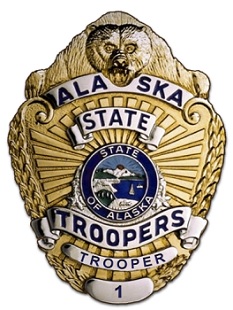
Seiner ordered to pay $24K in fines and restitution for illegal 2019 harvest
Alaska Wildlife Troopers report that 41-year old Jasper Allbrett entered an agreement with the Office of Special Prosecutions to plead guilty to a pair of misdemeanor counts of commercial fishing in closed waters. Allbrett was fined $30,000 with $20,000 suspended and ordered to pay restitution of $14,700. He’ll serve two years on probation, and his seine permit will be suspended for one year. >click to read< 12:49
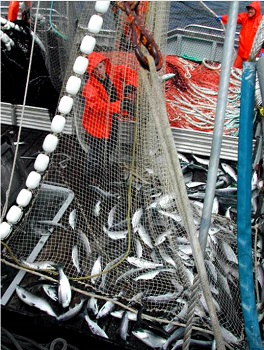
Survey says processors are beefing up for record Bristol Bay run, but it still might not be enough
If the state’s forecasts for the 2022 Bristol Bay sockeye run are even close to accurate, there could end up being millions more fish to catch than anyone is willing, or able, to buy. A survey conducted in January by the Alaska Department of Fish and Game of 15 Bristol Bay-area processors found that the processing companies intend to purchase up to 52 million sockeye this year. However, the department is predicting a record Bristol Bay inshore run next year of more than 73 million fish, which would provide nearly 62 million available for harvest based on the escapement goals for each of the major river systems that feed the Bay. The record-level prediction follows a record inshore run of more than 66 million sockeye last year that lead to a commercial harvest of 40.4 million fish, one of the largest Bristol Bay sockeye harvests ever. >click to read< 12:07
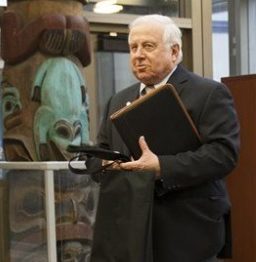
Former Alaska Board of Fisheries appointee Roland Maw pleads guilty to PFD fraud
A former nominee to the Alaska Board of Fisheries and a prominent Cook Inlet commercial fisherman pleaded guilty to a misdemeanor count of unsworn falsification on Friday, ending a six-year legal struggle that saw him accused of multiple counts of Permanent Fund dividend fraud and improperly obtaining resident fishing licenses. Roland Maw, nominated by former Gov. Bill Walker to the Fish Board in 2015 but never appointed, will pay a $500 fine and pay restitution of $9,582. He had been facing 12 felonies and 5 misdemeanors; the remaining charges are dismissed. >click to read< 13:23
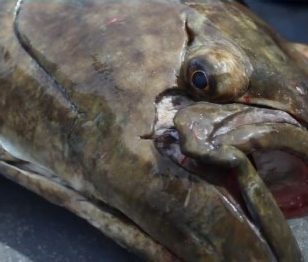
NPFMC ponders changes in the halibut catch sharing plan
When the North Pacific Fishery Management Council adopted its halibut Catch Share Plan back 2014, charter operators were granted 125% of their historic catch at low levels of abundance, with that additional 25% coming out of quota for the commercial longline sector. Commercial longliners were assured that no further uncompensated reallocations would be considered, but now federal fisheries managers are doing just that. The Halibut Coalition is urging its membership of commercial harvesters to write to the governors of Alaska, Washington and Oregon expressing their views, as the representatives of those states on the NPFMC voted in favor of considering changes to halibut allocations. >click to read< 13:41

Bycatch task force works to refine mission ahead of November deadline
Bycatch is when fishing vessels catch something they’re not targeting. It could be tanner crab caught in a black cod pot, or halibut scooped up in a pollock trawl net. It’s been an incendiary issue in Alaska’s fisheries for decades. Now, as stocks of crab, salmon and halibut decline, trawl fisheries have come under fire for their role, which represents the vast majority of incidental catch in and around Alaska. The governor’s office took notice. Gov. Mike Dunleavy established a task force to review bycatch late last year with a deadline of November to submit its recommendations. But during that time, the Alaska Bycatch Review Task Force also has to establish its own priorities, break into subcommittees, and decide what it’s going to focus on before its mandate expires in just nine months. And there’s a lot of information to sort through already as it plays catch-up. >click to read< 11:01
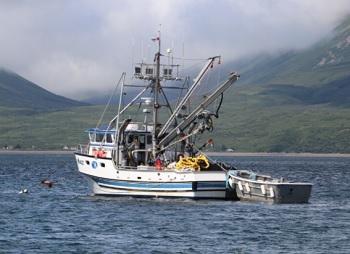
While Chignik fishermen wait on 2018 relief funds, some look beyond the fishery to survive
Aloys Kopun sat in the small harbormaster’s office in Chignik Bay last July as a few boats gently bobbed in the harbor’s turquoise water. “When we were fishing like we normally fished here, the whole harbor was always plump full,” he said. “As you can see, now, we had hardly nobody in here. And everybody’s gone tendering or went to other areas to fish, or some of them went broke.” Kopun fished in Chignik, on the Alaska Peninsula, for decades before becoming the summer harbormaster. Significantly fewer boats have returned since the Chignik sockeye run failed in 2018. Fishermen who depend on the salmon closed out that season without making a paycheck. photos, >click to read< 12:02
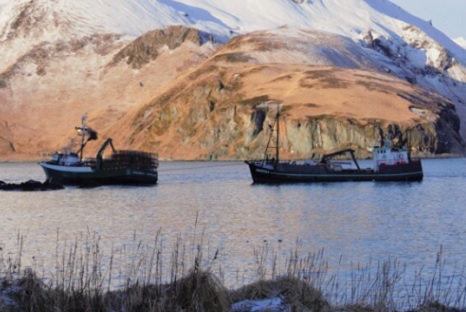
Fishing vessel runs aground in Unalaska, pulled free by F/V Amatuli
A fishing vessel ran aground in Unalaska Saturday morning. It was en route to offload crab at local processing plant Westward Seafoods. The 92-foot F/V Kevleen K, homeported in Seattle, hit rocks near Little South America just before 10 a.m., according to port officials. The boat was pulled off the rocks by the F/V Amatuli about an hour later Why it ran aground is still unclear. >click to read< 08:44
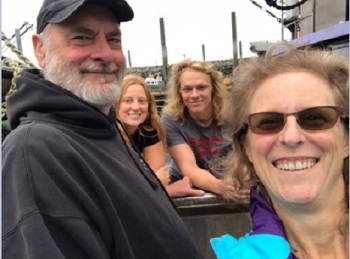
New memorial scholarship honors Wrangell commercial fishing siblings Sig and Helen Decker
21-year-old Sig Decker and 19-year-old Helen Decker grew up commercial fishing with their parents on the family boat. “That was a really fun time as a family. It’s sort of the most genuine family time you can get is all being in a little tiny boat in the middle of nowhere and working together,” says Julie Decker, Sig and Helen’s mom. “At a certain point, I think they wanted more. So then they started crewing on seine boats and were on a couple  different boats, and then eventually were in the same boat, the summer of 2020.” On July 27, 2020, Sig and Helen and two other crewmates, 29-year-old Ian Martin of Petersburg and 37-year-old Dennis Lord of Elmira Heights, New York, were killed in a car crash on Mitkof Island south of Petersburg while on a break from commercial fishing. >click to read< 15:14
different boats, and then eventually were in the same boat, the summer of 2020.” On July 27, 2020, Sig and Helen and two other crewmates, 29-year-old Ian Martin of Petersburg and 37-year-old Dennis Lord of Elmira Heights, New York, were killed in a car crash on Mitkof Island south of Petersburg while on a break from commercial fishing. >click to read< 15:14
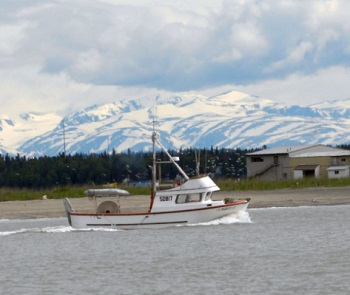
Alaska Department of Fish and Game forecasts fair to poor sockeye runs for Cook Inlet, Copper River
State biologists are projecting a mixed bag of returns this spring and summer for Southcentral’s popular sockeye salmon fisheries. Alaska Department of Fish and Game officials on Feb. 7 issued a forecast estimating that just less than 5 million sockeye will return to upper Cook Inlet river systems, allowing for a harvest of nearly 3 million sockeye from the region overall. It’s expected approximately 2.9 million fish from the total run will be headed to the Kenai, with another 941,000 pegged for the nearby Kasilof. >click to read< 19:19
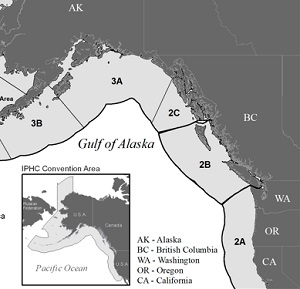
International Pacific Halibut commission raises most Alaska harvest limits for 2022
An uptick in halibut stocks along much of the Pacific coast means increases in total catch limits in every region of Alaska this year. The International Pacific Halibut Commission decided in its annual meeting last week to increase catch limits in every management region except for 2A, which covers the California, Oregon, and Washington coast, with an overall coastwide increase of nearly 6%. The increase comes after IPHC researchers informed the commission that halibut stocks were showing signs of rebounding from lows in the last five years, in part due to a large age class from 2012 becoming mature. The long-term trends of decline seemed to end in 2013, when the stocks began to climb again. >click to read< 14:37
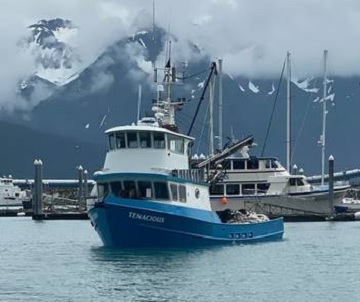
Fatigue Led to Sinking of Fishing Vessel in Alaska
On July 24, 2021, the fishing vessel F/V Tenacious, which fished primarily for pink salmon, grounded at the entrance to Wells Passage while transiting to fishing grounds in Prince William Sound. The five crewmembers abandoned the vessel and were rescued. The Tenacious later sank. The Tenacious crew arrived in Whittier late on July 22 to resolve maintenance issues with their skiff ahead of the opening of the fishery on July 24. Three of the crew made a 4-hour round trip to Seward, Alaska to borrow another skiff. According to a deckhand, the whole crew was running off “not too much sleep.” About two hours after getting under way for the July 24 fishery, the Tenacious struck rocks. >click to read< 10:27

Video: Coast Guard rescues two fishermen from sinking vessel near Sitka
The Coast Guard rescued two fishermen from their sinking vessel, Monday in Islet Passage, near Sitka, Alaska. A Coast Guard Air Station Sitka MH-60 Jayhawk helicopter aircrew hoisted the two fishermen at approximately 9 p.m. from the 40-foot fishing vessel, F/V Glory, approximately nine miles south of Sitka. The aircrew lowered a rescue swimmer to assess the vessel that was taking on water. The fishermen were unable to secure the source of the flooding and the rescue swimmer advised the fisherman to abandon ship. Video, >click to read< 18:39

Bering Sea snow crab deemed ‘overfished’
After a sudden decline in the stock last year, federal managers have officially designated Bering Sea snow crab as overfished and are working on a plan to rebuild the stock. In October, the National Marine Fisheries Service determined that with its current low numbers, the stock of Bering Sea snow crab, also known as opilio crab, is officially overfished. However, the stock is “not subject to overfishing,” according to a report submitted to the North Pacific Fishery Management Council on the issue. That’s because the fishery removals aren’t above the level considered to be sustainable, rather it’s because the stock dropped for other reasons that scientists and managers aren’t entire sure of yet. >click to read<

Fishery Disaster Assistance: Aid can take years to come through
The designation is supposed to unlock funds to help the communities impacted by those fisheries failures, including communities around Cook Inlet. But it can take years for the money to reach fishermen’s pockets. U.S. Sen. Lisa Murkowski said the timing is one of the problems with the process. “If you’ve had a disaster that happened in 2018, we’re sitting here in 2022 and you’re saying, ‘Really? You think that that’s going to help me?’ In the meantime. I’ve got a boat mortgage that I’ve got to be paying. I’ve got a crew that I’ve got to be paying. This doesn’t help me at all,” she said. >click to read< 16:49






